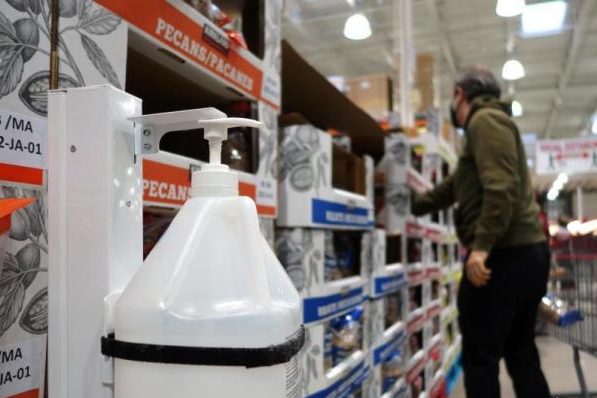April 17 Canada’s cumulative number of reported coronavirus cases on April 16 exceeded 1.1 million. In the face of surging new cases, provinces in the “worst-hit areas” of the outbreak are upgrading prevention and control measures.
As of the evening of the 16th, the cumulative number of cases in Canada was about 1.1061 million, an increase of more than 9,300 cases over the previous day; The country reported 9,562 new cases in a single day on 15 April and 8,669 new cases in seven days, all reaching historical extremes.
Ontario, the most populous province and the province with the largest cumulative number of reported cases, announced on the 16th a further escalation of the epidemic prevention and blockade measures, from the 8th of this month to implement the home order will be extended for another two weeks, until May 20. Officials will step up inspections and penalties, while giving police the power to intercept, conduct and punish those who leave their homes. At the same time, “non-essential” travel from neighbouring provinces is prohibited. Officials in neighboring Quebec later said cross-provincial travel from Ontario would be banned accordingly.
Other measures in Ontario include closing outdoor leisure and entertainment venues, “unnecessary” construction sites, further reducing party numbers, supermarket capacity, and so on. The province has recently asked all primary and secondary schools to change their Online classes.
Ontario’s governor, Ford, warned that without immediate and decisive action, the outbreak would spiral out of control and hospitals would be embarrassed: “We are losing the battle between the mutated virus and the vaccine.” He reiterated his call for people to go out as little as possible.
Ontario has sought assistance from other provinces and territories in the hope of providing health care. The province’s intensive care unit (ICU) has a total of about 2,300 beds, of which about 700 have been used to treat patients with coronavirus. Epidemiological models in the province predict that more than a thousand coronavirus patients will need to enter the ICU within two weeks.
In British Columbia, on the Pacific coast, the number of hospital admissions and the number of people entering the ICU in coronavirus cases also reached new highs.
The cumulative number of reported cases in Canada exceeded 1 million on 3 April, an increase of 100,000 in just 13 days. Since April 9, Canada has surpassed the U.S. in confirmed cases per million people, according to Johns Hopkins University.
The Canadian Medical Association on the 16th called on the government to take extraordinary measures when the epidemic exceeds the critical point, further adopt epidemic prevention restrictions, and mobilize national resources, launch a national collaboration, through cross-regional sharing of medical resources, to help medical capacity has been overwhelmed areas, save more lives.
Vaccine availability in Canada remains volatile and less efficient than expected. In places such as Toronto, some vaccination sites were suspended because of vaccine cuts. Officials say 12 million doses of the vaccine will not be delivered by the end of June. Prime Minister Justin Trudeau expressed disappointment, but said Canada had bought an additional 8 million doses of the vaccine from Pfizer.
To date, 7.29 million people in Canada have received at least one dose of coronavirus vaccine, accounting for 19.18 per cent of the country’s total population;



